Posted by Elena del Valle on May 6, 2016
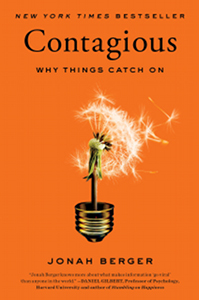
Contagious
Photos: Simon & Schuster, Deborah Feingold
Jonah Berger, Ph.D., who teaches marketing at the Wharton School at the University of Pennsylvania, is convinced popular topics share identifiable commonalities. After spending 15 years studying and researching how social influence works and how it drives products and ideas to catch on he thinks he has uncovered some of the reasons that people talk more about some products and ideas than others. In Contagious Why Things Catch On (Simon & Schuster, $14.69), a New York Times bestseller title published in 2013 and named Best Marketing Book of 2014 by the American Marketing Association, he outlines his theories on the topic.
He says that while people don’t pay attention to advertisements, they listen to their peers. In his book, which took more than 10 years from idea to publication, he outlines six basic principles he is convinced drive things to become popular. He describes them as Social Currency, Triggers, Emotion, Public, Practical Value, and Stories.
Following an introductory chapter, he dedicates a chapter to each of the principles in his 244-page hardcover book. He cites examples of how a steakhouse executive got buzz for his restaurant by adding a luxury sandwich to his menu, why anti-drug commercials may have increased drug use, and why 200 million consumers shared a video about a blender.
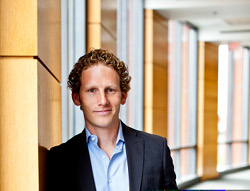
Johan Berger, author, Contagious
He wrote the book for “anyone who wants to get something to catch on. Might be a small business owner with a new service, a marketing manager launching a new product, or someone who wants to get others to change their behavior.”
When asked by email how he defines contagious for marketing purposes the marketing professor said it is “something that spreads from person to person via word of mouth.”
He shares surprising tidbits. For example, in the Leverage Game Mechanics section, he discusses how less than 10 percent of the estimated 10 trillion frequent flyer miles remain unused. In the Make People Feel Like Insiders section, he talks about the new found popularity of the McDonald’s McRib, which despite its name is made mostly of tripe, heart and stomach meat.
His second book, Invisible Influence: The Hidden Forces that Shape Behavior, on a similar topic is due out June 2016. One of the biggest challenges to writing and publishing the book, he said, was pulling all the research together.
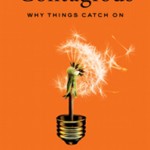
Click to buy Contagious
Comments:
Filed Under: Books
Posted by Elena del Valle on April 29, 2016
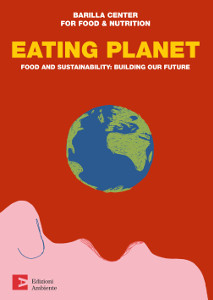
Eating Planet
Photos: Barilla Center for Food and Nutrition
Obesity costs the global economy $2 trillion annually. Contrasting that food waste costs another $2.6 trillion globally, according to the U.N. Food and Agriculture Organization (FAO). To put the issue of food into a human perspective 795 million people are believed to suffer from hunger or famine while at the same time 2.1 billion people are obese or overweight, according to the Barilla Center for Food & Nutrition Foundation in Italy. The organization and its members are among the high level thinkers across the globe concerned about the issues of food and nutrition.
In late February 2016, the Foundation launched the new edition of Eating Planet: Food and Sustainability: Building Our Future designed to provide “a comprehensive tool summarizing business perspectives on the global problems of food sustainability.” The first edition was published in 2012.
“These proposals can now be used as a starting point to truly correct the imbalances and distortions that are affecting the planet and the life of every one of us,” said Paulo Barilla, vice president, Barilla, in a promotional email about the book.




Contributing authors (left to right) Danielle Nierenberg, Barbara Buchner Matt Russell and Paolo De Castro
The report, to be published in several languages, focuses on the need for decision-making tools to guide research and innovation in the sector. The various authors suggest priority initiatives for decision makers and citizens, including many initiatives that have already been established by BCFN’s other action platforms such as the Milan Protocol and the Youth Manifesto.
The 301-page English language edition is divided into four main sections: Food For All, Food for Sustainable Growth, Food for Health, and Food for Culture. It is peppered with colorful photos and graphics.
Among the numerous contributing authors are Barbara Buchner, head of Climate Policy Initiative in Europe; Paolo De Castro, Italian politician, economist and agronomist; Carlo Petrini, president, Slow Food; Ricardo Uauy, professor, Public Health Nutrition at the Institute of Nutrition and Food Technology; Shimon Peres, President of Israel from 2007 to 2014; and Danielle Nierenberg, president, Food Tank.

Click to buy Eating Planet – english edition
Comments:
Filed Under: Books
Posted by Elena del Valle on April 15, 2016
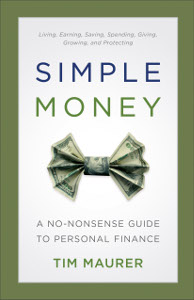
Simple Money
Photos: PR by the Book
Tim Maurer, director of personal finance, at Buckingham and the BAM Alliance, helps a team of 350 financial advisors nationally focus on the personal, non-numerical elements of financial advisory work such as behavioral finance, client interaction and communication. He dedicated a little over a year from idea to publication to Simple Money A No-Nonsense Guide to Personal Finance (BakerBooks, $15.99), a 285-page softcover book published this year, hoping, he says in the first chapter, for readers to find contentment, a richer life and a freer mind through the book.
When asked by email via his publisher how he defines simple money, he said: “Money management is complex because we are complex. Therefore, it is in better understanding ourselves that we are able to make even the most confounding financial decisions simple.”
The book is divided into 21 chapters and five parts: Planning for Life, Planning for Today, Planning for the Inevitable, Planning for the Unexpected and Planning for Action. He wrote the first two parts of the book, Planning for Life and Planning for Today, for all readers. The remainder he wrote for those curious about a particular topic like investing, life insurance, retirement planning or estate planning. He starts outlining four basic concepts: Personal finance is more personal than it is finance; We need to know why; Simple not simplistic; and Enough is “enough.”
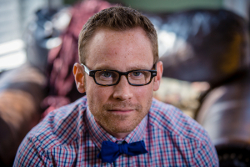
Tim Maurer, author, Simple Money
“For many years, I’ve said that ‘personal finance is more personal than it is finance,’ a statement that resonates anecdotally with most,” he said when asked why he wrote the book. “But my research more recently, especially in the field of behavioral finance and the science of motivation, has proven the statement to be scientific fact. This inspired me to synthesize the best of behavioral finance and use it as a lens through which to reexamine personal finance. The challenge, of course, was in making it ‘simple’ enough to be practical. But that’s always been my passion.”
The biggest challenge he faced writing the book was that, “Although it’s not the first time I’ve shared it, I give the most detailed rendition to date of the story of my near-death car accident that forever shaped my view of life, work and money,” he said. “It’s an important story, and it’s good for me to tell it, but it’s not necessarily easy.”
Each chapter begins with an explanation of what makes the topic relevant to the reader and ends with summary points. In the book, he says that “One of the ways we can make financial decisions simple is to genuinely understand what motivates us.” He goes on to say that although motivation is at the root of what we want too often it remains separate from our financial planning.
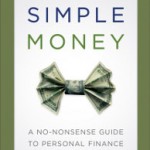
Click to buy Simple Money
Comments:
Filed Under: Books
Posted by Elena del Valle on March 18, 2016
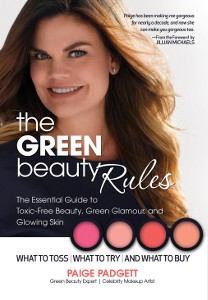
The Green Beauty Rules
Photos: cover by Don Flood and author photo by Michele LoBosco
Do you worry about artificial ingredients in your cosmetics and personal products but are reluctant to stop wearing makeup? After attending a presentation by Ken Cook, founder, Environmental Working Group, Paige Padgett, a makeup artist, had concerns about the ingredients in the products she used so she began to explore toxic-free alternatives.
When asked by email how she defines the term she said, “That is difficult as it’s different for everyone. For me it’s about being sustainable. Organic and natural are ideal but sustainable takes it a bit further. Ingredients should be sustainable which includes being non-toxic.”
From concept to publication she dedicated two years to The Green Beauty Rules: The Essential Guide to Toxic-Free Beauty, Green Glamour and Glowing Skin (HCI Books, $21.95), a 256-page softcover book peppered with full color photos published in 2015. In it, her first book, she promises a step-by-step guide and a sample clean beauty routine of approximately 200 chemically-safe beauty products, ranking 3 or lower on the Environmental Working Group’s Skin Deep Cosmetic Database. Green beauty, she explains in her book, doesn’t mean organic, all natural or completely chemical free; and minerals, for example, can’t be certified organic so mineral-based products aren’t organic. The main reason she wrote the book was because there were no books on that subject for women who use makeup and want to use green cosmetics, she explained by email.

Paige Padgett, author, The Green Beauty Rules
“There are a few on the market that are fun but none from a makeup artists perspective that talks about chemicals and give a step by step guide to green your routine and beauty tutorials,” she said. When asked how she became an expert she said she never she studied chemistry but, “Rather I am one of the few professional pioneers in the industry. However, I have attended several dozen conferences, seminars, workshops, talks events on the subject over the years as well as chemistry courses interviewing prominent people in the industry and writing for magazines on the subject.”
According to her bio, Padgett, the founder of PaigePadgett.com, was one of the first makeup artists to create a completely green makeup line. The biggest challenge she encountered in the book project was the time and cost of photography. The biggest surprise? “That when you write a book you are not finished. You have to market the book forever,” she said.
She believes in green beauty that is chemically safe, cruelty free and eco-friendly. That means avoiding petrochemicals and nanoparticles, she says. In the book she explains that they have been linked to allergies, skin irritation, cancer, serious health issues, neuro and respiratory damage, birth defect, and disruption of the endocrine system. In a chapter titled The Nasties she lists examples of those products and why readers should not use them. The chapter includes a list of 20 of the most common harmful chemicals often present in beauty products. For example, she says parabens are hormone disruptors found in 99 percent of cosmetics.
In the book, she provides suggestions for shopping venues, vegan and gluten-free brands, and products under $15. She also shares information on nail care, hair care, bath and body products, sun care and hair removal products, as well as products for travel, and organic fragrances.

Click to buy The Green Beauty Rules
Comments:
Filed Under: Books
Posted by Elena del Valle on March 4, 2016

Our Final Invention
Photos: book cover courtesy of St. Martin’s Press, and author photo courtesy of Ruth Lynn Miller
Filmmaker James Barrat was stunned when he stumbled on an issue he found so complex and important that he felt it necessary to write about it rather than produce a documentary. Four years later his book, Our Final Invention: Artificial Intelligence and the End of the Human Era (St. Martin’s Press, $16.99), was published. He is now keen to spread the word about the Artificial Intelligence (AI) issue further through a film, provided he finds funding.
“The AI Risk issue struck me as hugely important and all but unknown,” the author said by email. “There were no books or films about it, and the only people discussing it were technologists and philosophers. They were working hard on solving the problem, but not on publicizing it. As a documentary filmmaker, I bring complex scientific and historical subjects to large audiences. That’s my expertise. So I felt uniquely positioned, even duty-bound, to spread the word. I wrote a book rather than make a film because even simplified AI Risk is a complex subject. An average hour-long documentary film contains just 5,000 words. I knew I could do a better job at bringing this subject to a wide audience with a book of 80,000 words.”
The softcover book, his first, is divided into an Introduction and 16 chapters. He wrote it for the general public convinced everyone should become award of AI issues. In the book, he says he believes AGI, an advanced super intelligence, could arise from Wall Street. That while an intelligence explosion might be missed by the average person, the secretive environment on Wall Street lends itself to the development of such technology. He also believes the developers of artificial intelligence may posses the same lack of moral fiber as the oft maligned financial executives who have repeatedly misbehaved without intense regulation.
“Artificial Intelligence is the science and study of creating machines that perform functions normally performed by human intelligence,” he said when asked to define the concepts for non scientists. “These include the whole range of human cognitive abilities: logical reasoning, navigation, object recognition, language processing, theorem proving, learning, and much more. AGI is Artificial General Intelligence, or machine intelligence at roughly human level, in all its domains. ASI is Artificial Super Intelligence, or machine intelligence at greater than human level. We’re probably no more than two decades away from creating AGI. Shortly after that we’ll share the planet with ASIs that are thousands or millions of times more intelligent than we are. My book asks ‘Can we survive?’”
Where is the dividing line between an operating system and artificial intelligence? He describes an operating system as “simply the interface between you, a human, and the parts of the computer that process information. For example, Apple’s OS is functional computer window dressing that allows you to perform useful jobs with the computer’s processors, memory and other hardware. The OS isn’t intelligent.” Instead, Artificial Intelligence is a computer program or linked programs that perform acts of human-like intelligence in very narrow domains, such as search and navigation.
When asked if it is necessary for an entity to be self aware in order for it to be artificial intelligence, he said, “Artificial Intelligence is all around us – in our phones, our cars, our homes. It’s not self aware in any important sense. However, self-awareness may be necessary for AGI. In our own intelligence, self-awareness plays a large part. Our awareness of our bodies and minds and our environment impacts how we perform tasks, achieve goals, and learn. It remains to be seen if computers can emulate our intelligent behavior without self awareness. It may be possible. Probably it’ll be necessary for the computer to have some kind of self-awareness, for example, a mathematical model of itself and its environment.
But will it have anything like real consciousness? Will it know it exists? Good questions. I believe we’ll create wildly intelligent aliens. That is, they’ll be super effective at intelligent tasks, but they’ll perform them differently than we do, and they won’t possess an inner life anything like ours. For example, an airplane doesn’t fly like a bird or have other qualities of a bird, but it accomplishes the same essential feat much faster and for much longer, under harsher conditions. In the same way, a superintelligent machine will outperform us in every cognitive dimension. But it won’t have our mammalian evolutionary inheritance of empathy, or love. It won’t have an inner life at all unless we program one in. And we don’t have any idea how to do that.”

Click to buy Our Final Invention
Comments:
Filed Under: Books
Posted by Elena del Valle on February 5, 2016
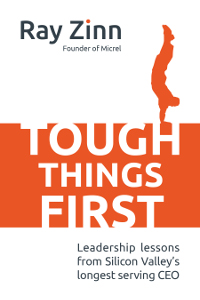
Tough Things First
Photos: McGraw Hill
When as a young man Ray Zinn decided to drop out of college he learned a lesson in discipline from his parents that influenced his life and eventually his career. In time he became convinced that we must do the things we don’t want to do because they are either not fun or look too imposing ahead of easy ones. This belief served him well when in 1978 he co-founded Micrel, a company that sells electronics for smartphones, consumer electronics and enterprise networks. He led the profitable company for 37 years until his retirement last year.
In Tough Things First Leadership Lessons from Silicon Valley’s Longest-Serving CEO (McGraw Hill, $25), a 250-page hardcover book published this year, he shares his approach to business and leadership for an audience of entrepreneurs and business leaders. He is convinced that good leaders learn to love and embrace the distasteful tasks in their lives once they understand how important they are to their careers and success.
“I wanted to synthesize my 37 years of running a high tech company, with the purpose of inspiring and helping the up-and-coming entrepreneur in running their businesses correctly,” he said by email via his publishing company when asked about the main reason he wrote the book.
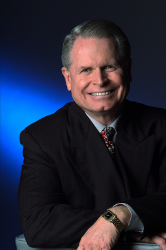
Ray Zinn, author, Tough Things First
The book is divided into nine chapters and an epilogue in two parts: Business as a body: disciplining an organization from head to foot and Entrepreneurialism: building companies that last through the ages. Each chapter ends with a bullet point list of lessons. He wraps up highlighting seven aspects he believes are necessary to start a company. They are: outlining financial milestone goals, preparing an exit, establishing principles, coming up with a plan for the unexpected emergency that will come up sooner or later, striving for calm and good mental health, preparing for the long term, and being humble.
“The biggest surprise is the effort and cost to market the book,” he said. “Publishers today rely on the author far too much for marketing, and reaching broad audiences takes effort.”
Zinn founded Mentor Capital, an entrepreneur accelerator, to support the efforts of innovators wishing to establish new companies and to change the leadership foundations in Silicon Valley and beyond. He said the greatest challenge to the three year long book project for him was being legally blind. Tough Things First was his first book.
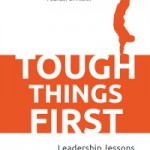
Click to buy Tough Things First
Comments:
Filed Under: Books
Posted by Elena del Valle on January 29, 2016
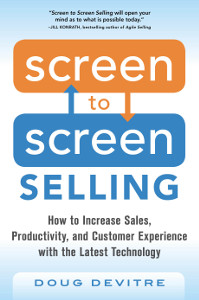
Screen-to-Screen Selling
Photo: McGraw Hill Education
As a growing generation of Millenials, accustomed to and sometimes demanding technology, penetrates the workforce and the circle of new buyers, businesses must adapt or risk loosing the race to capture their attention. Increasingly that generation relies on electronic devices in ways the Baby Boomers do not. For example, Americans in their 20s and 30s are more likely to make purchases with smartphones than by paying with cash or checks (see Bank time is now screen time, The New York Times, January 24, 2016).
Doug Devitre, author, Screen-to-Screen Selling How to Increase Sales, Productivity, and Customer Experience with the Latest Technology (McGraw Hill, $30) is convinced online and digital sales are essential. In the 304-page hardcover book, published in 2015, he strives to guide readers to grow sales, improve performance, and keep customers happy with apps, software and tools.
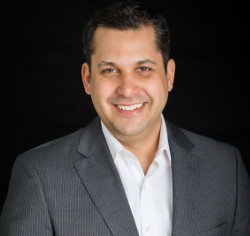
Doug Devitre, author, Screen-to-Screen Selling
The book is divided into 20 chapters spread across three sections: Preparation, Conversation and Follow Up. According to the book, it is possible to customize the sales process when selling screen to screen to meet customer desires, based on their capabilities and their software or equipment, and that in turn humanizes the experience.
Also, trying new technologies will set leaders apart, the author says. He believes success in that space comes with inherent risks. Screen to Screen skills, he believes, has led him to improve other skills such as old fashioned pen and paper note taking as well as maintaining relationships easily, having a flexible work schedule and taking much needed time off.
Devitre, founder of Doug Devitre International, Inc., developed the concept of Screen-to-Screen Selling, a process for sales professionals to use technology during transactions to drive sales and increase profitability. Before founding the new company he was a realtor, trainer and speaker.
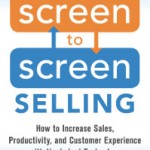
Click to buy Screen to Screen Selling
Comments:
Filed Under: Books
Posted by Elena del Valle on January 15, 2016
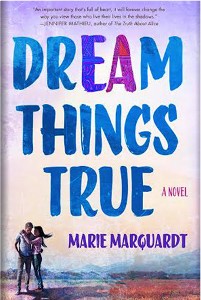
Dream Things True
Photos: Kenzie Tainow, St. Martin’s Griffin
Despite an already busy academic and personal life Marie Marquardt dedicated part of her time over five years to write and publish Dream Things True (St. Martin’s Griffin, $18.99), her first fiction book, hoping to make readers 13 and older understand that “Undocumented immigration is complicated, and it’s so often misrepresented in the sound bites we hear on the news. I want to give readers a chance to see this issue through the eyes of love, and to be reminded that love is more powerful than fear.”
The 330-page paperback book tell the story of a teenage couple who live in the same town and fall in love only to be torn apart by circumstances related to the young woman’s immigration status. The undocumented minor, an illegal resident of the United States since she was two years of age who excels in school and has a loving family, and her love interest face the challenges of her situation and the complications brought on by immigration, young love and family.
“Because I’ve written non-fiction books about undocumented immigration, I often get asked to talk with groups of non-immigrants about these issues,” Marquardt said by email when asked what prompted her to write the book. “I know a lot of facts and figures, and these help people think about immigration in new ways, but I find that what really matters is relationship – knowing and loving a person who faces these issues is what makes a person care. Not everyone gets the chance to know and love an undocumented immigrant, but fiction can give us all the opportunity to step into their lives – the lives of immigrants and the lives of people who love them. This is powerful, and I believe it is so important – it helps us to overcome all of the politicized rhetoric, and simply to see each other as human beings deserving of love and respect.”
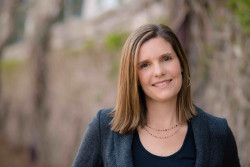
Marie Marquardt, author, Dream Things True
When asked why she chose fiction, she said “I have had the real honor and pleasure of developing close friendships with undocumented immigrants, and I’ve been a part of their children’s lives as they have grown up. I wanted to create a story that draws on the range of experiences I have had with undocumented young adults — that dives into the emotions of those experiences, not just the facts. Plus, writing fiction is so much more fun!”
In May, 2015, the book was named one of five 2015 Book Expo America (BEA) Buzz Books. It has been featured in The Atlanta Journal and Constitution, The Huffington Post, and Mundo Hispanico. She participated in a blog tour around the time of release, and was featured on more than thirty book blogs. This month, her guest post is due to appear on Latin@s in KidLit, and the book is a January 2016 selection for the Las Comadres and Friends National Latino Book Club Conversations with… series.
Marquardt, a college professor in Decatur, Georgia, was inspired by her work with Mexican immigrants in Georgia. For the past five years, she has worked with volunteers to run El Refugio, a nonprofit that offers temporary lodging and support for the loved ones of detained immigrants.
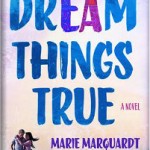
Click to buy Dream Things True: A Novel
Comments:
Filed Under: Books
Posted by Elena del Valle on December 4, 2015
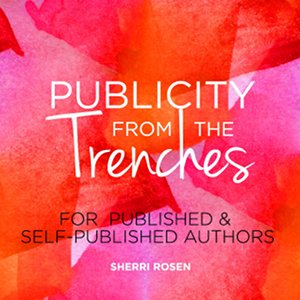
Publicity From The Trenches
Photos: Sherri Rosen
Because of the fast moving publishing environment gaining attention in the increasingly crowded space of digital and print books can be challenging for new and experienced authors. Some authors know little about publicity self promotion.
Keeping that in mind, Sheri Rosen, head of Sherri Rosen Publicity in New York City wrote a book. She believes that in order to do publicity for a client’s book the publicist must care about the book. She shares tips based on her experience and knowledge with a touch of self promotion in a book for authors. She published Publicity From The Trenches: For Published and Self-Published Authors Paperback, (CreateSpace Independent Publishing, $19.99), a 132-page softcover book (the PDF review copy had 124 pages) March 2015.
The book is peppered with colorful designs and photos, and highlighted quotes. In the section titled The Bottom Line About Publicity, she asks readers, “Imagine publicity with your style, your natural fit, your price, and always your personal satisfaction. Sounds too good to be true, doesn’t it? We thought so, too, but every day, we strive to be a truly custom publicist. That’s our bottom line.”
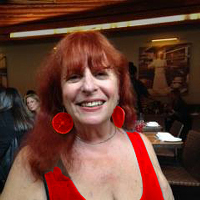
Sherri Rosen, author, Publicity From The Trenches
She points out that authors are a business and it requires promotion. At the same time, they should spend their time writing while someone with the experience and interest in their work promotes their book. About social media she says it can do a help and also it “… can be a tangled web of wasted time…” Further on in the book she talks about the importance of branding, building a platform and personalized publicity.
Before leading her own publicity company for 17 years, Rosen was in live theater in New York City. According to her website, she writes articles for the Examiner.com, Elephant Journal.com, TheGoodmenProject.com, and for her own Redhead’s Rap Blog.
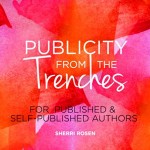
Click to buy Publicity From The Trenches
Comments:
Filed Under: Books
Posted by Elena del Valle on November 20, 2015
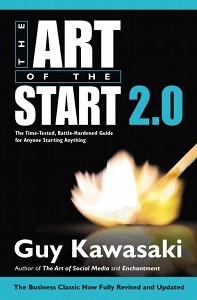
The Art of the Start 2.0
Photo: Guy Kawasaki
This year, Guy Kawasaki, author of The Art of the Start first published in 2004, released an updated edition 64 percent longer than the original book. In it, he shares his ideas on starting a new business or launching a new product or service and advice about social media, public relations, advertising, business plans, pitching, and crowdfunding among other topics.
In The Art of the Start 2.0: The Time-Tested, Battle-Hardened Guide for Anyone Starting Anything (Portfolio Penguin, $29.95), a 326-page hardcover book, he says business plans are part of the past along with advertising and public relations.
The book is peppered with questions and answers sections and exercises.
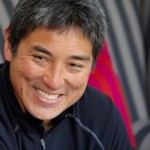
Guy Kawasaki, author, The Art of the Start 2.0
It is divided into 13 chapters in four sections: Conception, Activation, Proliferation and Obligation. In Chapter 6, Kawasaki says, “I pitch, therefore I am.” Through the sentence he seeks to emphasize the importance he assigns to seeking buy-in through fundraising, agreement, partnerships, sales and hiring staff. He ends the book with a short chapter, recommending that readers seek a greater goal than riches and self promotion. He proposes that they help others who cannot reciprocate.
Kawasaki, chief evangelist, Canva, is trustee of the Wikimedia Foundation, and executive fellow at the Haas School of Business at U.C. Berkeley. Formerly, he was an adviser to the Motorola business unit of Google and chief evangelist of Apple. Some of his other titles include APE (see Entrepreneur, app developer self publish book on digital publishing), The Art of Social Media (see Social media fans share their techniques in book), and Enchantment (see Guy Kawasaki, former Apple executive, discusses Enchantment in book).
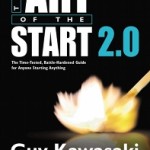
Click to buy The Art of the Start 2.0
Comments:
Filed Under: Books









































